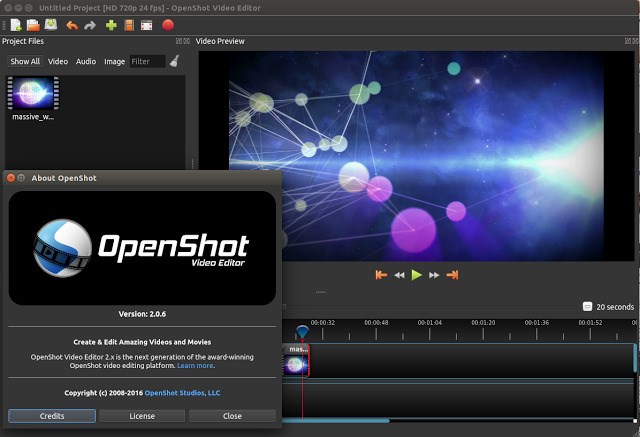
- #LIGHTWORKS FREE VS LIGHTWORKS PRO GENERATOR#
- #LIGHTWORKS FREE VS LIGHTWORKS PRO FULL#
- #LIGHTWORKS FREE VS LIGHTWORKS PRO SOFTWARE#
- #LIGHTWORKS FREE VS LIGHTWORKS PRO PROFESSIONAL#
To start with, you need to add the transition to the clip that’s above another one. It can be a little tricky to find your way around, and for us the most confusing aspect was the transitions. You select an effect, drag it onto a clip, alter its parameters (including the ability to have them change over time thanks to keyframing), and you’re done. It’s powerful and easy (Image credit: Lightworks) This may not sound like a big deal until you realise that you increase the potential for mistakenly overwriting audio which you’d then have to source again, wasting a lot of precious time.įind an effect you like, drag it onto a clip and then alter its parameter. Moving a video clip to another layer will also not automatically move the audio to other layers, even though the audio and video are linked. Not so with Lightworks: put a video in V2, its audio goes to A1 and A2, thereby potentially overwriting any audio already there that belongs to a clip on V1. Were you to put a video on V2, its audio would automatically go to A3 and A4. In other editing software, adding a video on layer V1, would add the audio in layers A1 and A2 (for stereo sound). This is definitely something that needs practice to perfect.Īlthough you can work with multiple layers of audio and video, it’s not all sunshine and daffodils. Innovative though this is, it can get tricky, especially when working with multiple layers and multiple handles across multiple clips get automatically selected. If you highlight both the left and right handles of a clip, its position in the timeline and duration remains the same, but as you drag left or right, you move its in and out points in relation to the original clip, ie, you’re changing the part of the clip you’re using. You can then drag them left or right to alter the edit point, or the gap between two clips depending on what you selected. Select any of them by clicking on them - turning the handle yellow.

The highlighted portion is either on the internal or external side of that end. Hover over clips and handles appear at either end of them - depending where the cursor is positioned. There are a few features that made us stand up and take notice (both good and bad), some of which we’d like to chat about here: You have multiple layers, can preview clips, set in and out points, the works.
#LIGHTWORKS FREE VS LIGHTWORKS PRO PROFESSIONAL#
The real-time effects feature in Lightworks further increases its capabilities as you can use the built in motion graphics to capture live action scenes.Titles are in the VFX workspace, and are fully customisable (Image credit: Lightworks) Editingīuilding an edit is pretty much as you’d expect from a professional level video editor. You can also apply different transitions and images to each video element in the timeline, thereby making your movies look more professional.
#LIGHTWORKS FREE VS LIGHTWORKS PRO GENERATOR#
The Lightworks timeline generator allows you to create a visually stunning timeline for your videos.
#LIGHTWORKS FREE VS LIGHTWORKS PRO SOFTWARE#
The software also comes with a vast library of professionally designed images and transitions, which will greatly help you when it comes to editing and creating your own images. It allows you to import all types of video formats such as the n footage, wmv, avi, mov, and flv. In addition, the program includes a powerful audio recorder that makes it possible to capture audio recordings of important meetings or telephone conversations, and a multitude of other features, including easy importing and exporting to and from a wide range of formats.

Lightworks uses an advanced video editing engine, called Silverlight, to deliver highly intuitive operations. While these features are not the most advanced available in a color correcting program, they are perfect for beginners and are easy enough to master on the first try. The chroma-keying tool operates by adjusting the red, green, and blue colors of images or videos.
#LIGHTWORKS FREE VS LIGHTWORKS PRO FULL#
The text tool allows for making full color corrections. Once you have selected a clip, you will be asked to name it and attach a reference number to it.Īlso included are both text and chroma keying tools. You can choose which clips to save in your media pool using drag and drop operations or by clicking on the "new" option at the bottom of the screen. One of the primary functions of DaVinci Resolve software is the media pool at the top right of the screen. This allows the user to make adjustments with regards to contrast, brightness, shadows, and color during the editing process. The software offers both Chroma Key and Radiance Compensation.

Its unique color grading function is also new to this software. DaVinci Resolve does four different functions: conversion of videos to black & white, conversion of videos to chroma keying, and an intuitive editing interface.


 0 kommentar(er)
0 kommentar(er)
